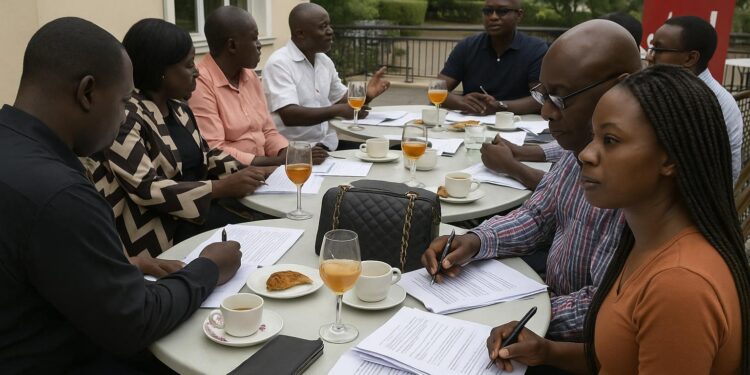Recalibrating Official Industrial Metrics
Brazzaville’s National Institute of Statistics (INS) has opened a direct dialogue with manufacturers to rebuild the country’s Industrial Production Index (IPI) and Industrial Producer Price Index (IPPI). General-Director Steve Bertrand Mboko Ibara framed the project as “a cornerstone for credible macro forecasts” during a 24 October session.
The revamp comes amid shifts in oil output, timber processing and telecom services that have altered industrial weightings since the original base year. INS officials want new baskets, sampling frames and seasonal adjustment techniques that match UN and AfDB guidelines, according to participants.
Why IPI and IPPI Matter for Boardrooms
IPI tracks real production volumes, signalling whether factories utilise capacity or idle. IPPI monitors ex-factory prices, a precursor to consumer inflation. Together they inform inventory planning, wage negotiations and hedging decisions, executives noted after the meeting.
Bankers add that reliable indices improve sovereign risk assessments and corporate loan pricing. ‘If the sample expands beyond the current dozen companies, analysts can calibrate cash-flow projections with more confidence,’ said a credit officer at a regional bank, welcoming the initiative.
New Methodology Aligned with Global Standards
INS statisticians intend to adopt the 2019 UN industrial statistics manual, shift to Laspeyres formulas and introduce chain-linking. Weights will derive from the latest structural business survey rather than decade-old tax returns, reducing bias toward legacy oil installations.
Consultants from the African Development Bank will mentor local teams on seasonal decomposition and outlier detection. Cloud-based processing, hosted in Brazzaville’s new government data centre, should shorten publication lags from 90 to 45 days, officials project.
Data Collection: Corporate Role and Incentives
INS will dispatch electronic questionnaires in monthly ‘waves’. Firms supplying complete forms within five days may access anonymised sector dashboards before public release, offering a competitive edge. Late or incomplete returns could trigger on-site visits, though sanctions remain unlikely at this stage, Mboko Ibara reassured.
To ease compliance, the institute plans tutorial webinars and a helpline staffed by statisticians conversant with industry terminology. An MoU under discussion could let chambers of commerce pre-validate submissions, reducing duplication for multi-plant groups.
Implications for Fiscal and Monetary Planning
Finance ministry economists expect the enhanced IPI to feed into quarterly GDP flash estimates, offering earlier warning signs of shocks such as energy outages or commodity reversals. That visibility could refine cash-flow projections for the 2025 budget framework currently under preparation.
For the Bank of Central African States, a more granular IPPI can improve inflation targeting across the CFA franc zone. ‘Input costs feed through to consumer prices within two quarters; better upstream data inform smoother policy calibration,’ commented a BEAC representative after the briefing.
Digital Tools to Secure Timely Reporting
INS is piloting encrypted mobile applications enabling factory managers to scan invoices and production logs directly into the database. The platform, developed with a local fintech, integrates bar-code readers to minimise manual input errors, according to technical notes shared with participants.
A dashboard will flag anomalies—such as volume spikes exceeding three standard deviations—and prompt follow-up calls within 24 hours. INS argues the feedback loop can foster a data-driven culture inside firms, aligning with the national digitalisation agenda championed by the Ministry of Posts and Telecommunications.
Next Steps and Timetable
The consultation phase runs until mid-November, after which INS will finalise questionnaires and sampling. Test production of the revamped indices is scheduled for January using parallel runs against the legacy series, enabling back-casting and consistency checks, official documents state.
Full publication of the new IPI and IPPI is targeted for the second quarter of 2024. INS intends to accompany the release with technical notes detailing methodology, response rates and revision policies to meet IMF Special Data Dissemination Standard recommendations.
Industry representatives left the Brazzaville session largely optimistic. ‘Transparent statistics are as valuable as fiscal incentives,’ observed a cement-plant CFO. With commodity prices volatile and supply chains evolving, timely indices could help Congolese manufacturing navigate uncertainty while reinforcing investor confidence in the nation’s reform agenda.
Regional Benchmarking and Investor Signalling
Once implemented, Congo-Brazzaville will join Cameroon and Côte d’Ivoire, which already publish monthly industrial indices. Comparative dashboards envisioned by INS could attract regional portfolio managers seeking diversification within Cemac. ‘Cross-country data harmonisation strengthens the investment case for Central Africa,’ argued an analyst at a Douala brokerage.
Multilateral lenders tend to link disbursements to statistical milestones. According to officials, the African Development Bank’s upcoming budget-support tranche includes triggers related to IPPI modernisation. Successful delivery could unlock concessional resources earmarked for electricity grid upgrades, creating a virtuous loop between data quality and industrial capacity.
Capacity Building for Future Surveys
Beyond the two indices, INS envisions a rolling programme to update employment, energy consumption and capacity-utilisation indicators. Staff will undergo training at the East African Statistical Training Centre in Dar es Salaam, financed by a World Bank trust fund, insiders confirmed.
The institute has also negotiated academic partnerships with Marien Ngouabi University to embed student interns in the monthly collection cycle. This strategy aims to domesticise statistical expertise and reduce reliance on external consultants over the medium term.












































